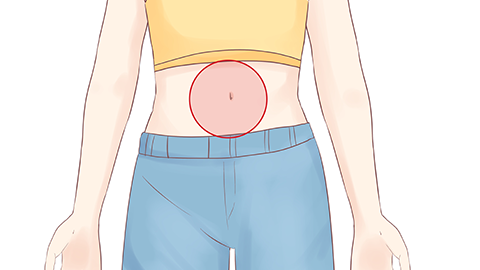What are the causes of periumbilical pain after cesarean section?
Caesarean section usually refers to a cesarean delivery. Generally, post-cesarean periumbilical pain may be caused by uterine contractions, recovery of intestinal peristalsis, abdominal incision tension, intra-abdominal adhesions, or pelvic inflammatory disease. If discomfort occurs, it is recommended to seek timely medical attention at a qualified hospital. Detailed explanations are as follows:
1. Uterine Contractions
After surgery, the uterus continuously contracts to return to its pre-pregnancy state. The pulling sensation from these contractions may radiate to the periumbilical area, causing pain. Pain can be relieved by resting on one's side or, under a doctor's guidance, gently massaging the lower abdomen to promote uterine recovery. Avoid prolonged standing or sitting to reduce pressure on the abdomen.
2. Recovery of Intestinal Peristalsis
As gastrointestinal function gradually recovers after surgery, intestinal peristalsis may stimulate the peritoneum, causing periumbilical pain. At this time, drinking warm water appropriately and, when physically possible, slowly getting out of bed and moving around can help promote intestinal motility and gas release. Initially, choose liquid foods such as rice broth and lotus root starch, gradually transitioning to semi-liquid and regular foods.

3. Abdominal Incision Tension
During the healing process of the surgical incision, localized tissue growth may cause tension, resulting in periumbilical pain. Keep the incision clean and dry, and avoid pulling on the incision area. Wear loose clothing to reduce friction on the incision and surrounding tissues. If the pain is mild, distraction techniques such as listening to music may help.
4. Intra-abdominal Adhesions
Postoperative adhesions within the abdominal cavity may cause intestinal traction during peristalsis, leading to periumbilical pain. Under medical guidance, medications such as domperidone tablets, mosapride tablets, or simethicone emulsion may be used to promote intestinal motility and alleviate discomfort. Additionally, increase physical activity appropriately and avoid prolonged bed rest.
5. Pelvic Inflammatory Disease
Postoperative infection may lead to pelvic inflammatory disease, with inflammation irritating surrounding tissues and causing periumbilical pain, possibly accompanied by symptoms such as fever. Treatment under medical supervision may involve administration of medications such as ceftriaxone sodium injection, metronidazole injection, or azithromycin capsules. Adequate rest and enhanced nutrition are important during treatment to improve physical immunity.
In daily life, post-cesarean care should focus on wound management to prevent infection, and a light yet nutritionally balanced diet should be maintained to promote recovery. If pain persists or worsens, timely medical attention is necessary.






